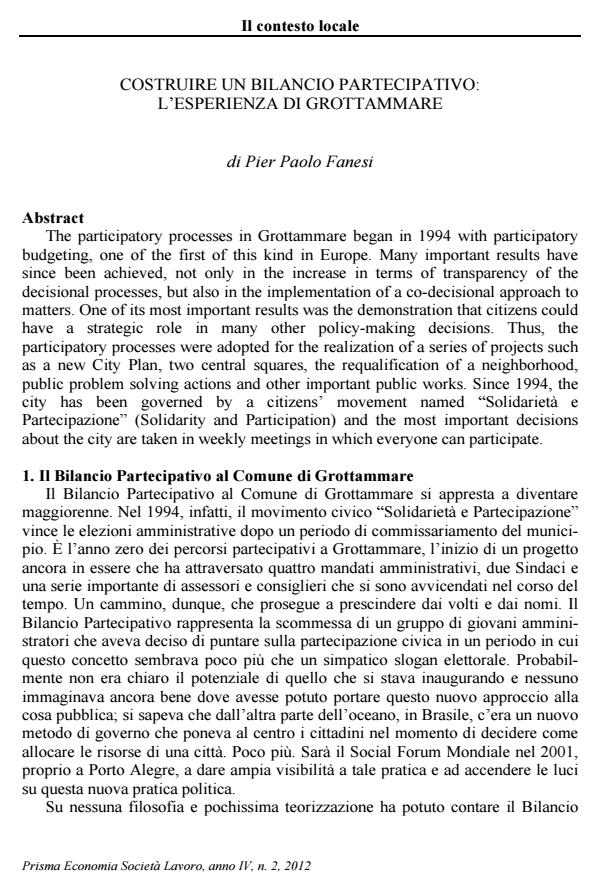Costruire un bilancio partecipativo: l’esperienza di Grottammare
Journal title PRISMA Economia - Società - Lavoro
Author/s Pier Paolo Fanesi
Publishing Year 2013 Issue 2012/2
Language Italian Pages 14 P. 87-100 File size 226 KB
DOI 10.3280/PRI2012-002007
DOI is like a bar code for intellectual property: to have more infomation
click here
Below, you can see the article first page
If you want to buy this article in PDF format, you can do it, following the instructions to buy download credits

FrancoAngeli is member of Publishers International Linking Association, Inc (PILA), a not-for-profit association which run the CrossRef service enabling links to and from online scholarly content.
The participatory processes in Grottammare began in 1994 with participatory budgeting, one of the first of this kind in Europe. Many important results have since been achieved, not only in the increase in terms of transparency of the decisional processes, but also in the implementation of a co-decisional approach to matters. One of its most important results was the demonstration that citizens could have a strategic role in many other policy-making decisions. Thus, the participatory processes were adopted for the realization of a series of projects such as a new City Plan, two central squares, the requalification of a neighborhood, public problem solving actions and other important public works. Since 1994, the city has been governed by a citizens’ movement named "Solidarietà e Partecipazione" (Solidarity and Participation) and the most important decisions about the city are taken in weekly meetings in which everyone can participate.
Pier Paolo Fanesi, Costruire un bilancio partecipativo: l’esperienza di Grottammare in "PRISMA Economia - Società - Lavoro" 2/2012, pp 87-100, DOI: 10.3280/PRI2012-002007